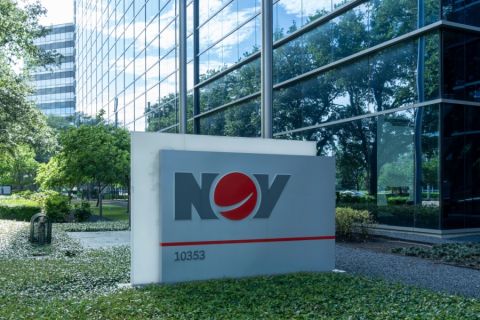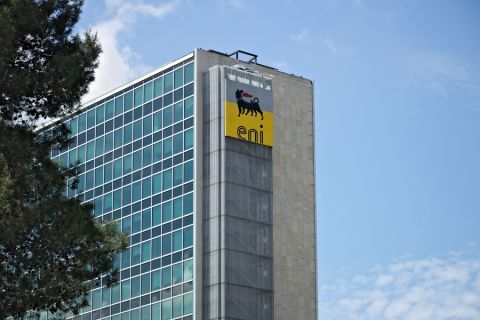A drillship is operating at a water depth of 3,811 m (12,500 ft), nearing the end of a 45-day campaign. The subsea BOP’s control system automatically performs a battery of preprogrammed tests with each ram cycle. The data determine that the pipe rams require increasing levels of hydraulic pressure to close. Based on these data, the system models the number of additional closing cycles that can be performed within the system’s acceptable limits.
A report is automatically sent to the toolpusher onboard, the operations manager onshore, and the rig’s supply chain team. The report includes the BOP model, a bill of materials for parts that will require replacement, and a profile of the BOP’s current performance envelopes vs. what these performance envelopes would be after repairs are performed.
Based on this information, the toolpusher confirms that this job can be completed without intervention. The operations manager schedules a service visit to the site, and supply chain personnel assemble and send the required replacement parts on the next scheduled supply ship. After completing the current job, the BOP is serviced while the drillship transits to its next location. The BOP system is redeployed without any lost drilling time.
As implied in the above scenario, this next-generation BOP not only has to meet the challenges of extreme water depths, high annular pressures, and downhole temperatures, but it also must work smarter. Through the combination of mechanical performance and a new degree of data collection and management, “big iron” will meet “big data” on the ocean floor.
Intelligent approach to reliability goals
Reliability is the driver behind the industry’s commitment to incorporate these degrees of system intelligence to next-generation BOPs. As seabed targets reach 3,811 m deep and beyond, system reliability directly impacts the operator’s balance sheet due to the significant time required to trip a BOP to the surface and back for a service issue. Mechanical advances can help deliver greater degrees of in situ performance, but it is the data that are generated and mined that create step-change reliability improvements.
For example, GE Oil & Gas’ 5,000-psi blind shear rams are becoming popular among operators for their ability to shear both drillpipe and some tool joints up to 6 5/ 8 in. in diameter. By adding RamTel ram positioning sensors, the operator generates performance data that can be used to create equipment baselines or “fingerprints.” This intelligence advancement helps the mechanical systems operate to the maximum potential.
Smart BOPs equal a smarter industry
A smart BOP provides several performance advantages beyond the typical “deeper-harsher-hotter” capability advancements alone. High-fidelity information about the complete BOP system will enable an operator to effectively carry out the current job while maximizing performance for future operations. Planning service intervals in advance rather than responding to a maintenance issue as it arises can reduce nonproductive rig time. This forward-looking approach to maintenance also enables proactive servicing of components that, while still operating to specification at present, may wear during the course of an upcoming drilling campaign.
Detailed information and multisite reporting also can help an operator make the most of lessons learned in complex drilling operations. Conditions encountered on one drillsite can be modeled and best practices reported to other sites operating simultaneously, leveraging data accessed from one BOP across an entire fleet of drillships.
Reaching the goal of a smart BOP
Simply collecting data does not make a next-generation BOP. A smart BOP system must shed light on “dark data,” turning those data into actionable information and improving the fidelity of that information by monitoring the system holistically. This level of information will enable the operator to predictively mitigate problems before they occur.
GE Oil & Gas is developing the information technologies necessary to bring the smart BOP system to drilling operations while preparing for the physical challenges of future drilling environments.
Turning raw data into information
A truly smart BOP requires the ability to monitor the status of the various components in the stack. Systems such as GE Oil & Gas’ Drilling iBox are designed to turn the raw data that are generated in a BOP system into information that can be used to proactively plan service intervals, reducing nonproductive downtime. More information about the condition of subsea systems means better decisions can be made by the operator at every stage of a drilling program.
Service intervals can be planned in advance to minimize rig downtime, and adjustments can be made in the drilling process to improve performance and extend service life. Most importantly, these enhanced data will provide an offshore driller with the critical information needed to maintain a high degree of safety that can protect the crew and the environment. These smart systems also are designed to communicate beyond the doghouse, letting the rig share its status with operations leaders onshore or with drilling teams on other vessels.
With the volume of data that a deepwater drilling system is capable of producing, a robust means of control is required to put the information to work. Likewise, BOP control systems are rapidly evolving to take advantage of the near-instantaneous response and feedback that are possible with current control pods.
By leveraging the processing power and built-in redundancies designed for critical deepwater drilling applications, deepwater operators will be able to turn large amounts of data into significantly improved system uptimes.
The BOP is designed to operate in near-freezing waters 4 km (2.5 miles) below the surface and is a mission-critical piece of drilling equipment that serves as the last line of defense between oil or gas and the ocean. Smart BOPs will help operators make better operational and maintenance decisions with the goal of minimizing or eliminating unplanned downtime, resulting in savings for the operators – in hours, dollars, and opportunities lost.
Recommended Reading
NOV Announces $1B Repurchase Program, Ups Dividend
2024-04-26 - NOV expects to increase its quarterly cash dividend on its common stock by 50% to $0.075 per share from $0.05 per share.
Repsol to Drop Marcellus Rig in June
2024-04-26 - Spain’s Repsol plans to drop its Marcellus Shale rig in June and reduce capex in the play due to the current U.S. gas price environment, CEO Josu Jon Imaz told analysts during a quarterly webcast.
US Drillers Cut Most Oil Rigs in a Week Since November
2024-04-26 - The number of oil rigs fell by five to 506 this week, while gas rigs fell by one to 105, their lowest since December 2021.
CNX, Appalachia Peers Defer Completions as NatGas Prices Languish
2024-04-25 - Henry Hub blues: CNX Resources and other Appalachia producers are slashing production and deferring well completions as natural gas spot prices hover near record lows.
Chevron’s Tengiz Oil Field Operations Start Up in Kazakhstan
2024-04-25 - The final phase of Chevron’s project will produce about 260,000 bbl/d.




